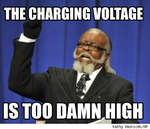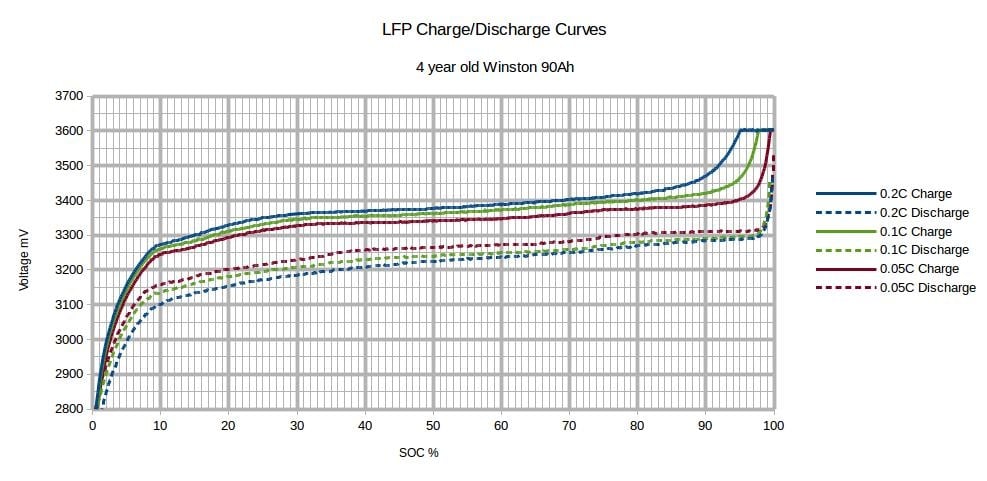User Tools
This is an old revision of the document!
Table of Contents
DRAFT
Problems caused by excessive LiFePO4 charging voltage
So your LiFePO4 battery is acting up:
- won't charge fully
- seems to have reduced capacity
- voltages in the system are spiking, perhaps tripping your inverter
It's fairly common for excessive charging voltage to cause these symptoms. Unfortunately it's very common for preconfigured Lithium profiles to charge at voltages high enough to trigger the issue.
TLDR
If this is the problem then reducing the charging voltage will cause the symptoms to improve or disappear.
the full process
- reduce charging voltage (aka “absorption voltage”, “boost voltage”) to something like 13.6v and float voltage, if used, to something like 13.4v. You may have to use a USER profile instead of a canned LITHIUM profile.1) If you choose to modify the Li profile itself take a pic or notes of the original settings so you know what they were and can return to them later if desired.2)
- observe for a few days. Charging will be slower and may not finish by sundown3), but we are most interested in whether or not the symptoms above clear up.
- if they do clear up you can start to raise the charging voltage back up gradually (13.65v, 13.7v, 13.74v, etc) or you can leave it low. {note from secessus: there is little benefit to charging LiFePO4 >13.8v.] Float can remain at 13.4v.
- if it starts acting up again drop charging voltage back down a notch or two
why lower-voltage charging works
LiFePO4 will fully charge at voltages as low as the mid-13s, but it will take more time at lower voltages; that time is called “Absorption duration”4). At the kinds of current levels we usually see in offgrid charging5) the duration looks like this:
- ≥14.0v will charge to 100% SoC with zero absorption: hit the voltage setpoint and stop. Cell voltages tend to diverge as charging voltage increases.
- 13.8v will charge to 100% SoC with token Absorption (10-30 minutes) and cells tend to stay in balance.
- 13.6v will charge to 100% SoC with several hours of Absorption ←- where we are starting
- 13.4v will eventually fully charge the bank but it would take days. Impractical for solar charging since the sun keeps going down…
why the problem occurs
- lithium cell voltages are very “flat” for most of their usable capacity. When deeply discharged the voltage drops off dramatically, and when they are overcharged their voltage spikes dramatically. Because of the shape of this voltage curve we sometimes say there is a “lower knee”, broad flat middle, and “upper knee”.
- when one cell hits the knee first it can “run away” voltage-wise, and do so quite suddenly. This unevenness in cell voltage is called “imbalance” and is more likely to happen with higher charging voltages.6)
- the BMS sees the runaway and shuts down charging to avoid damaging the cell7)
- which stops all charging of the battery8)
- if the cell imbalance is bad enough the battery can't charge anywhere near full because the misbehaving cell is causing charging to shut down early.
So we ease up on charging which encourages the cell to stay in line with the others, which allows for a full battery charge.
The bigger question is this: why do battery and charger manufacturers specify such high charging voltages in the first place? It's not a plot; there really are some benefits to charging at higher voltages, especially when selling to the general public.



